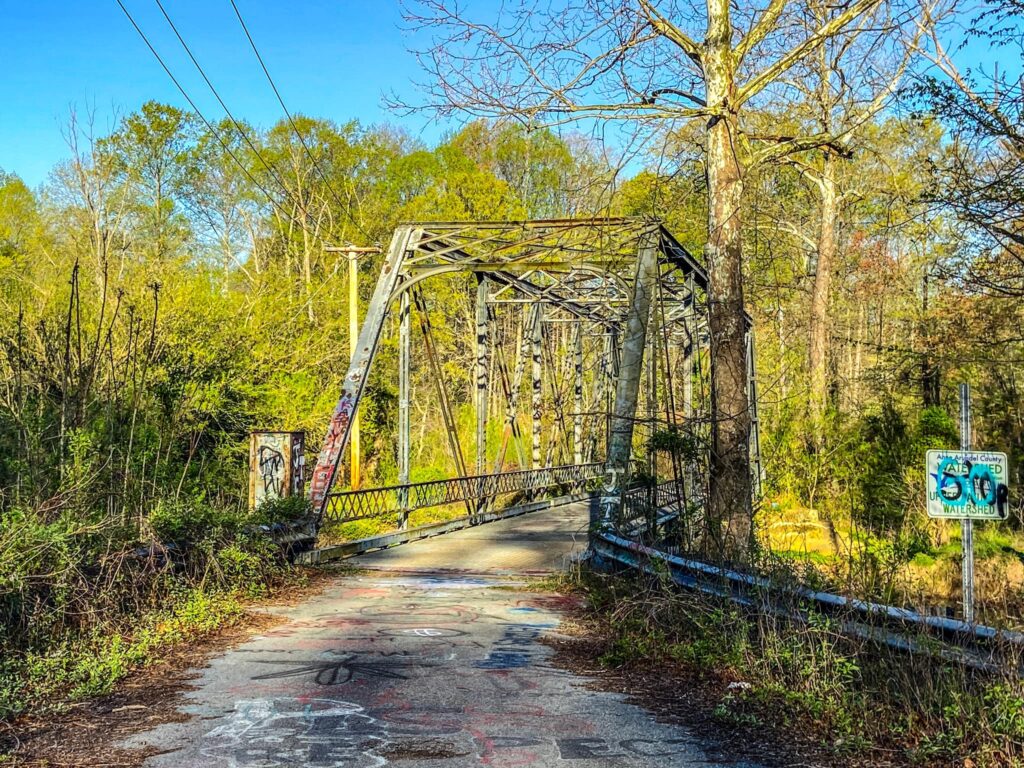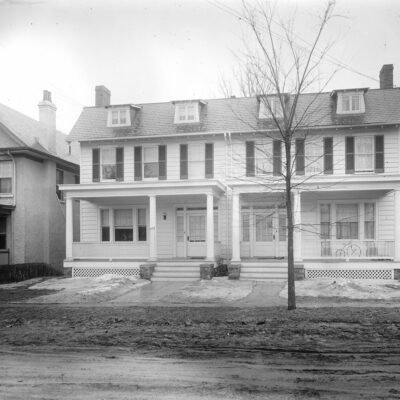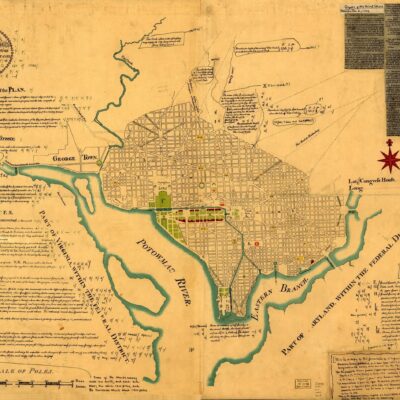
Axe-wielding, half-man, half-goat creatures have both terrified and captivated Americans for generations. From Texas to Kentucky, similar cryptids populate folklore, but the Maryland Goatman of Prince George’s County perhaps stands out as the most notorious. Since the late 1950s, he has earned his place as one of Maryland’s iconic monster myths, enduring for over 70 years.
In October 1971, The Prince George’s County News gave an early nod to the Maryland Goatman, exploring creature sightings near Fletchertown Road, drawing from the University of Maryland Folklore Archives. However, the subsequent month saw the legend’s explosion into the public eye. The Washington Post revealed a disturbing tale of a decapitated dog, Ginger, discovered near well-known Goatman locations in Bowie, Maryland. In this article, a witness named April Edwards was quoted, convinced that the Goatman had taken her pet’s life, emphatically stating, “What I saw was real and I know I’m not crazy.”
Over the years, initial Goatman accounts have inspired a plethora of interpretations regarding the creature’s origin and characteristics. Adventurous teens seeking out his alleged lairs reported even more sightings, further rooting the Goatman in regional narratives. As Mark Opsasnick, a Marylander and monster aficionado, commented to The Washington Post in 2008, “When I bring up the Goatman on the first day of class, every local instantly recognizes the reference.” Even as urban sprawl consumes formerly secluded forests, Maryland’s campfires and imaginations still blaze with the ever-evolving and captivating legend of the Goatman.
Origins of the Maryland Goatman Legend
Even before the Maryland Goatman’s dramatic emergence in the local monster lore of the 1970s, murmurs of his existence were already in the air. In fact, sightings of a hairy bipedal creature in Forestville and Upper Marlboro trace back to 1957, as noted by All That’s Interesting in 2022. But it was during the 1970s that Prince George’s County witnessed the meteoric rise of the Goatman, solidifying crucial aspects of his legend.
One widely accepted origin story ties the Goatman to Dr. Stephen Fletcher, a scientist at the U.S. Department of Agriculture’s Beltsville Agricultural Research Center. According to this narrative, Fletcher’s twisted ambition led him to attempt the fusion of human and animal DNA. Choosing goats as his unfortunate subjects, the crazed scientist endeavored to combine goat and human genes. However, instead of achieving a scientific marvel, he inadvertently transformed himself into the violent hybrid now known as the Goatman.

In 1971, The Washington Post conveyed local narratives which painted the Goatman as a “mad scientist” from Beltsville who birthed a murderous axe-wielding monstrosity through his experiments. The reports from Prince George’s County residents further detailed an “animal-like creature walking on its hind legs,” especially near the research center.
Yet another origin story shifts the blame from Fletcher to another local scientist, William Lottsford. As the story goes, Lottsford’s botched DNA experiments allegedly turned him into the fearsome goat-human hybrid haunting Maryland.
Still, not everyone buys into the scientific creation narrative of the Goatman. Some skeptics picture him as merely a hermit with a goat-like beard, hiding away in Maryland’s forests. His aloofness and startling outbursts might have fueled the spookier tales about him. Nonetheless, the idea of the Goatman emerging from ill-fated experiments lends an eerie touch of believability, making the myth even more spine-chilling and enthralling.
Common Elements of Goatman Lore
Although origin tales of the Maryland Goatman differ, certain consistent characteristics give shape to this local legend. Repeated physical attributes, popular haunts, and sinister behaviors in testimonies over the years have carved a distinct image of this mythical beast.
Typically, the Goatman is portrayed as a towering bipedal creature, blending human and goat features. His upper body mirrors a muscular man, but goat horns protrude from his head. Below, he boasts the furry hind legs and hooves of a goat. Eyewitnesses from the 1970s claimed they confronted a “massive hairy entity” standing around six feet, walking upright. Intriguingly, this creature also demonstrated the agility to swiftly dart on all fours, as mentioned by The Washington Post in 1971.
Besides his chimeric physique, the Goatman displays eerie abilities, ranging from shape-shifting and possessing superhuman strength to brandishing an axe menacingly. His reported cries, a chilling blend of human and goat, amplify the dread he evokes.
Bowie, Maryland’s winding backroads and secluded spots have become synonymous with Goatman sightings, particularly around Fletchertown Road. Another renowned locale is Crybaby Bridge, infamous for its frequent Goatman encounters. Nighttime drivers often recount harrowing tales of the Goatman stalking these desolate pathways. Alarmingly, he’s been known to aggressively pounce on passing vehicles, shattering windshields to reach terrified occupants.

But cars aren’t his only targets. The Goatman stands accused of beheading local pets, mainly dogs. He also seems to have a penchant for menacing thrill-seeking teenagers, shadowing them through woods or launching attacks if they intrude upon his territory. Over the years, campers, hikers, and couples seeking solitude have reported alarming encounters with this enigmatic Maryland menace.
Possible Explanations for the Legend
Numerous eyewitnesses vouch for their Goatman encounters over the years. However, logical explanations also exist for this legend’s grip on Prince George’s County. The 1970s, a time of heightened superstition and change, birthed the Goatman legend.
The Goatman’s rise matched the U.S.’s 1970s satanic panic wave. With Christian fundamentalism growing, fears of the occult spurred legends about devil worship and half-human monsters. Local tales of a Maryland hermit possibly evolved into darker stories amidst moral panic.
The era also marked suburban growth in former rural areas like Bowie. Increased youth freedom and activities played a part too. Teens in cars, seeking secluded party spots, reported Goatman sightings. Actual wildlife encounters or pranks probably magnified the legends. Opsasnick once remarked, “Deer become Bigfoot become the Goatman” in young minds, as mentioned by The Washington Post in 2008.
Moreover, our love for monsters and the supernatural persists. Ghost stories and campfire tales remain popular. The idea of Dr. Fletcher creating a human-goat creature adds a chilling realism. And while development encroaches on Goatman’s grounds, his legend remains a vital part of Maryland folklore.

The Cultural Legacy of the Maryland Goatman
While the Goatman may not be real, his impact on local culture and broader media has been very real over the past 50 years. This homegrown monster has inspired everything from news exposes to blockbuster films, becoming an icon of Maryland folklore and an exemplar of enduring urban legends.
The initial 1970s newspaper reports catapulted the Goatman to fame, and he has since appeared in various TV news segments and documentaries investigating the legend. Maryland resident and monster expert Mark Opsasnick has been interviewed extensively about the Goatman lore he grew up with. Other regional outlets have produced specials about famous Goatman haunts like Crybaby Bridge (also known as Governor Bridge). The 2015 book “Monsters of Maryland: Mysterious Creatures in the Old Line State” chronicles the Goatman alongside other local cryptids.
References in pop culture include episodes of “The X-Files” and “Supernatural” featuring Goatman-inspired monsters. The legend served as inspiration for the creature in the 2016 horror film “The Bye Bye Man.” In books, TV, and film, the Goatman archetype conveys a visceral sense of terror audiences intuitively understand, demonstrating his cultural penetration.
The Goatman has appeared in songs by artists ranging from metal bands to rapper DMX. Given his local roots, it is unsurprising that many tributes come from Maryland-based groups. The legend even inspired the name of Maryland indie-rock band “Goatman Howl.”
While the Goatman may lurk primarily in lore nowadays, his lasting appeal proves that monsters need not be real to occupy a very real place in human imagination. The local taboos, transgressions, and fears this mythical figure embodies will likely ensure his story continues enthralling new generations well beyond the Maryland woods that birthed him.



















